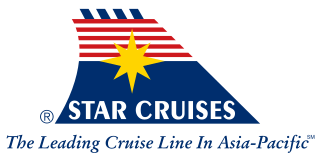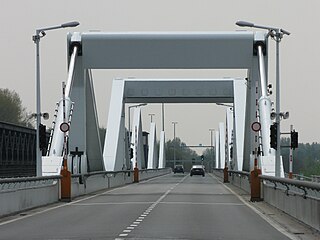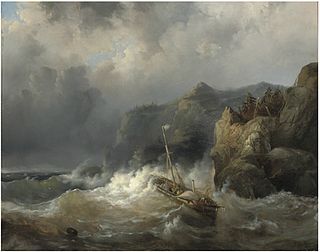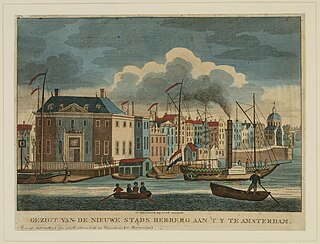
Temse is a municipality in East Flanders, Belgium.

Zwijndrecht is both a village and a municipality located in the Flemish province of Antwerp, in Belgium. As well as Zwijndrecht proper, the municipality includes the village of Burcht. In 2021, Zwijndrecht had a total population of 19,263.
Articles related to Belgium include:

Viking Line Abp is a Finnish shipping company that operates a fleet of ferries and cruiseferries between Finland, the Åland Islands, Sweden and Estonia. Viking Line shares are quoted on the Helsinki Stock Exchange. Viking Line is operated from Åland.

Star Cruises was a cruise line headquartered in Hong Kong and operating in the Asia-Pacific market. The company was owned by Genting Hong Kong. It was the eighteenth largest cruise line in the world after Carnival Corporation, Royal Caribbean Cruises and 15 others.
Rederi AB Slite was a Swedish shipping company, founded in 1947. The company was one of the three founding companies of Viking Line. Rederi AB Slite went bankrupt in 1993.
Seaspan ULC provides marine-related services to the Pacific Northwest. Within the Group are three shipyards, an intermodal ferry and car float business, along with a tug and barge transportation company that serves both domestic and international markets. Seaspan, is part of the Washington Companies that are owned by Dennis Washington. Kyle Washington, is the Executive Chairman of Seaspan, who has become a Canadian citizen.
The Baltic Sea Shipping Company or B.S.S.C is a Russian sea transport engaged in the business of oil products storage via rail wagons within Russian link-able terminals, and tanker ship along the inland waterways and coastal seas of European Russia. The company is headquartered in Saint Petersburg and operates in the Baltic Sea. It was founded in 1835. In the Soviet Union it was the largest steamship company with about two hundred registered vessels. In November 1992, it was transformed into a joint stock company.

A heavy-lift ship is a vessel designed to move very large loads that cannot be handled by normal ships. They are of two types:
The Okean Shipyard located in Mykolaiv, Ukraine is the third major ship construction yard in the area. It operates modern production facilities supplied by world known companies and it has a medium and heavy tonnage production line. The yard has constructed many different types of vessels to include non-self propelled barges, sea rescue tugs, timber-carriers, fish-processing factories, bulk carriers, and research ships.

STX Finland Oy, formerly Aker Yards Oy, was a Finnish shipbuilding company operating three shipyards in Finland, in Turku, Helsinki and Rauma, employing some 2,500 people. It was part of STX Europe, a group of international shipbuilding companies owned by the South Korean STX Corporation.
The Saverys family is one of the oldest shipping related families in Belgium. It controls the CMB group, Bocimar, Delphis, ASL Aviation, Euronav and Exmar companies. The combined wealth of the Saverys family is $951 Million dollars.

The Temse Bridge crosses the Scheldt at Temse, a small town approximately 25 km southwest of Antwerp. Between 1955 and 2009 the 365 m (1,197.5 ft) bridge was the longest in Belgium. The old bridge lost that distinction to the New Schelde Bridge which runs parallel to it, and has a length of 374 m (1,227.0 ft).

Egide Linnig or Egidius Linnig was a Belgian painter, draughtsman and engraver who is best known for his marine art and occasional genre scenes. He was one of the first realist engravers in Belgium.
The Equinox class is a series of related bulk carriers operated by Canadian shipping company Algoma Central for service on the Great Lakes. Two variants of the class have been ordered, totaling twelve ships.

Fijenoord was a shipbuilding company and machine factory in Rotterdam the Netherlands from 1823 to 1929. In 1929 it merged with Wilton to become Wilton-Fijenoord.

Amsterdamsche Droogdok Maatschappij (ADM) was a Dutch company that repaired ships using dry docks in Amsterdam, Netherlands. After World War II it also built some ships.
Mississippi Shipping Company of New Orleans, Louisiana was a passenger and cargo steamship company founded in 1919. In 1961 officially changed its name to the Delta Line. The Mississippi Shipping Co. serviced port from the Gulf of Mexico and east coast of South America. The Mississippi Shipping Co. was formed to support coffee merchants and Brazilian produce to New Orleans and up the Mississippi River. competing with the New York City trade. Delta Line failed to upgrade to container ships and modernize as other shipping lines did in the 1970s. In 1982 Delta Line, now owned by the Holiday Inn Corporation sold the line to Crowley Maritime. Crowley was the largest US barge and tugboat operator at the time. Crowley started to modernize the ships on the route, but sold the shipping line to the United States Lines in 1985. United States Lines brought some of the ships into its routes but went bankrupt in 1986. At its peak in 1949, the Mississippi-Delta line owned 14 ships at a total of 98,000 grt. Delta Line also moved into passenger cruise with to ship. During World War II the Mississippi Shipping Company was active with charter shipping with the Maritime Commission and War Shipping Administration. During wartime, the Mississippi Shipping Company operated Victory ships, Liberty shipss, and a few Empire ships.

The Nederlandsche Stoomboot Maatschappij ( ), abbreviated as NSM or NSBM, was a Dutch shipping line focused on inland navigation. In the 1820s it was important for the quick introduction of steam power on the Dutch rivers and on the Rhine. NSM owned the major shipbuilding company Fijenoord.

Amsterdamsche Stoomboot Maatschappij was an early Dutch steam shipping company.












